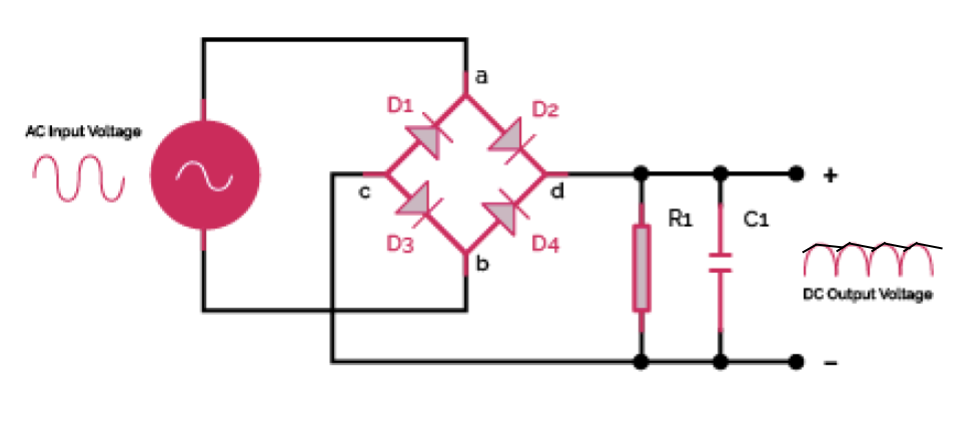Bridge Rectifier Calculator
Our bridge rectifier calculator is the perfect tool to obtain every parameter used in a bridge rectifier, such as current, DC voltage output, RMS current, and ripple factor.
We've paired this full wave bridge rectifier calculator with a brief description of key concepts regarding this topic, such as:
- What a bridge rectifier is;
- How to calculate the output voltage of a bridge rectifier;
- The ripple factor formula and definition;
- More!
Full wave bridge rectifier definition
A full wave bridge rectifier is a type of electrical circuit that converts alternating current (AC) into direct current (DC). It consists of four diodes arranged in a closed-loop configuration, with each side of this arrangement connected to a different side of the AC supply. As the current passes through the circuit, it experiences minimal ripple effects and produces a relatively stable output voltage.
🙋 If you don't know anything about AC circuits, our RC circuit calculator is the perfect place to start!
How does a bridge rectifier produce DC from AC?

During the positive half cycle, the diodes D1 and D3 are forward-biased, while D2 and D4 are reverse-biased.
The opposite happens during the negative half cycle: diodes D1 and D3 are reverse-biased, while D2 and D4 are forward-biased.
The result is a unidirectional load current.
We can then reduce the pulsating nature of this current by placing a capacitor in parallel with the resistor.
💡 See our capacitor energy calculator and resistor wattage calculator to understand how capacitors and resistors work.
How to calculate the output voltage of a bridge rectifier
To calculate the output voltage of a bridge rectifier, you can either use this bridge rectifier calculator or use the following formula:
where:
- is the average output voltage; and
- is the AC peak voltage.
Ripple factor formula and other parameters
Likewise, you can obtain the load current, ripple factor, and RMS current using this bridge rectifier calculator or by hand using their formulas.
Ripple factor:
where is the RMS current and is the average load current.
Load current:
where:
- is the load resistance;
- is the forward resistance of the diodes; and
- is the output voltage.
RMS current:
where is the peak load current.

Full-wave bridge rectifier diagram.